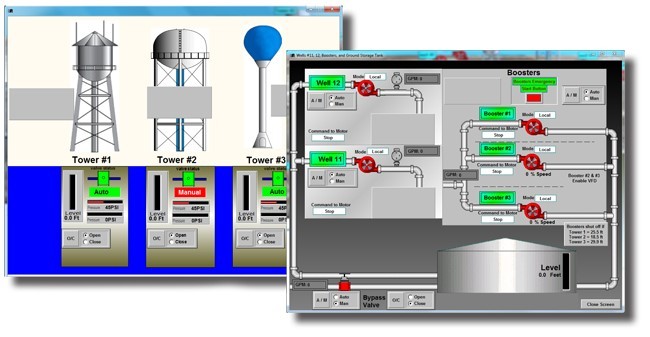
RF Consulting for Mission Critical
Office Phone: 954 961 2642
| Home | Choosing SCADA Radio Technology |
FCC License, License Free or
Cellular |
Design, Test, Then Build It | In-Field Radio Study | How to Build it Reliably | Photo Gallery |
Now more than ever technology options for creating
a radio connected SCADA system are vast. The intention of this site is to
provide resources for those tasked with designing, maintaining or operating a
high importance factor SCADA system. FCC
licensed, unlicensed and cellular technology will be discussed along with pros
and cons of each. User owned SCADA radio
networks often require initial design energy, this energy if spent well can
afford the owner a very robust and exceptionally reliable communications
network. Cellular based strategies have
their place in the market too and weighing the pros and cons of each technology
will allow the owner to make their best business decisions.
User owned SCADA communications networks can
achieve minimal down time measured in minutes per year vs. weeks after a severe
weather event, power failures, cable cuts, etc. The user owned SCADA radio networks are
completely controlled by the owner and their maintenance organization, vs
telco, cable, or cellular communications carriers. Private secure and autonomous data radio
networks are not vulnerable to cyber-attack / terrorism or hackers, Article from Wired Magazine on Cyber War. Proper
planning and control of your spare parts program can make a return to service as
simple as replacing a broken part.
Tornados, hurricanes, fires, and power outages often cause cellular
networks outages, as site backup power is usually a small number of minutes,
cell sites rely on wired telco infrastructure to create the cellular network
backhaul connections that are required for operation. Commercial power availability is required for
both wireless and wired connectivity as their (telco & cellular) backup
power access is typically minimal.
The industry standard for designing SCADA radio
links (both FCC licensed and unlicensed) is 20 dB of RF fade margin. This defines the additional radio signal that
is designed into each radio link to insure reliability. What the 20 dB fade margin really means is
that there is 100 times more signal than the minimum amount of RF carrier
signal needed to reliably operate the radio link and transport your mission
critical SCADA data on it. Decibels are
logarithmic numbers and a little goes a long way to provide data reliability.
There are countless SCADA radio networks
throughout the United States and abroad monitoring and controlling municipal
water, waste water, flood water, oil & gas production, power grids,
automatic meter reading, and much more. These mission critical radio technology
based communications systems have ranges from yards to hundreds of miles. Selecting the right technology, defining the
projects requirements, and creating a robust SCADA communications network is
what I do as an RF consultant. Having
the personal understanding of the pros and cons of each technology can empower
the project engineer, owner or operator to make the best business decisions for
a system that will have a 10-20 year service lifetime and are often mission
critical or high importance factor operation SCADA systems.
Please browse this site, if you have any questions
or a specific project you would like to discuss, please feel free to call on
me, Mark Lavallee. I truly enjoy sharing
my 30 years of specialized experience and knowledge. My company is often called upon assist design
build consultants, controls system integrators, and the end users
directly. We are highly specialized with
tools and talent for auditing existing SCADA systems, selecting the best SCADA
radio technology for new systems, and providing qualified radio network designs
/ in-field radios studies.
2009 - 2021